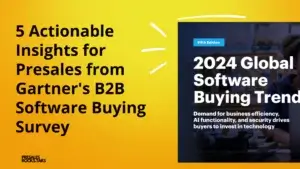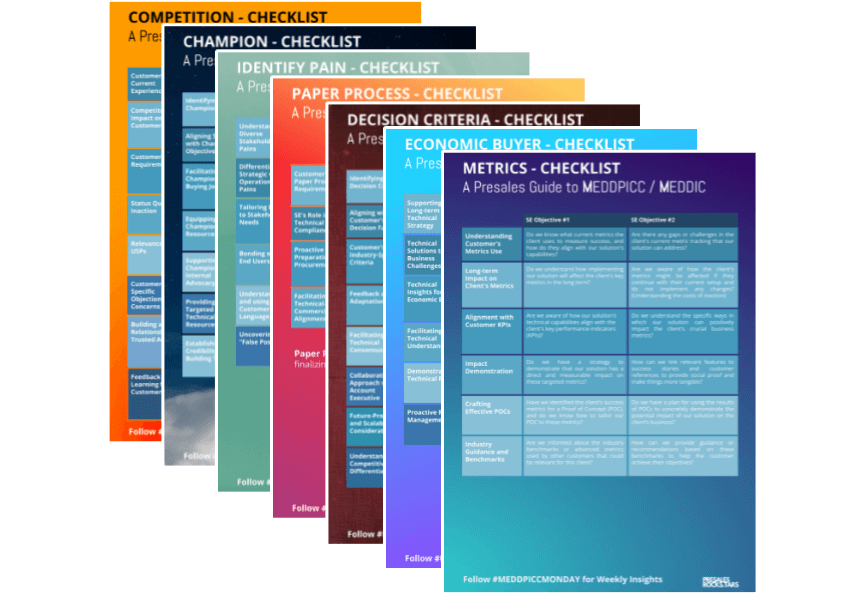Buying complex enterprise software has become more difficult than ever before. What has been a linear process in the past (and is still illustrated this way) has become a tedious back and forth. Rather than following a clear structure, it is a concurrent process of searching for information, validating, and aligning key stakeholders across time – to then overthink the current decision and start all over again.
This is both frustrating for buyers, who are spending (too) much time revisiting past decisions without making any meaningful progress. But it is also frustrating for sales because cycles times are taking forever.
But buying enterprise software does not have to be this way. It hasn’t become this tedious process because buyers want to go back and forth or throw their decisions over and over again.
It’s a result of numerous dysfunctional behaviours that can be observed in almost any collaborative and complex project. Essentially, buying enterprise software is nothing else than a project.
The detailed reasons for lengthy decision cycles and internal misalignment can be found in this article about the shift in power and buyer behaviour.
Research from Gartner confirms the struggles of buying complex B2B-solutions, since 53% of all buying initiatives end in „No Decision Made“. Especially internal missalignment is the reason for going back and forth.
Simplify Your Buying Experience To Increase Customer Satisfaction
Luckily, buyers are desperate to simplify things and to get greater clarity in their buying journey. But they don’t know how to – nor should they.
This is where great solution and presales consultants help their customers. They help potential clients understand how to buy, they help them navigate their buying process, reducing the complexity, and enable them what they need to figure out by themselved to achieve their goals.
It’s the job of modern sales engineers to provide great leadership in enabling customers to navigate their buying journey more effectively and efficiently. This interaction and guidance are what creates huge value for clients and boosts customer success as well as loyalty.
To better guide potential customers throughout their buying journey it is imperative to understand the challenges and phases potential clients need to accomplish to make a purchase decision.
Use Customer Journey Mapping To Guide Your Prospects
Customer journey mapping has been a widely discussed tool to illustrate how clients interact with a company and how to anticipate potential obstacles. The use of customer journey mapping can be seen mostly in B2C-marketing; however, it also helps clarify B2B-sales organizations how to strengthen and improve their customer experience at any stage of their buying journey.
Especially for B2B companies, mapping their customer journey is often used to track customer progression through the purchasing process in an attempt to facilitate and activate the sale.
This post is not meant to explain how to create a customer journey map. The web is full of insightful templates and explanations that go far beyond our expertise.
But what this post is supposed to teach you is the importance of knowing how to leverage your customers’ buying journey as a critical sales tool. In detail, you need to understand that:
- your buyers do not know where they are along their buying journey and what is coming next
- you need to know about the tasks your buyers need to accomplish at any stage
- you need to be aware of potential roadblocks your buyers might be facing
If there is one key takeaway, it’s about the relevance of proactively guiding your potential clients through their journey instead of being reactive to their challenges.
Anticipating Risks
Great presales and solution consultants step in with their guidance before their buyers are falling into a new trap. They anticipate potential risks and challenges and remove friction from the buying process to provide a seamless experience.
There is no point and added value mirroring the chaotic customer journey with your sales processes. It all about simplifying your buying experience and enabling your customers getting the right information to the right person at the right time in order to move a specific sale to closure.
Please note: there is a significant difference between enabling your buyers to make a decision and dictating them what to do next. When dictating the process, buyers quickly feel pushed towards the sale. This can quickly become balancing act – nobody likes hard-selling any more. Instead, enabling means to guide your buyers so they can make their own decisions. By offering them with contextual references or frameworks, buyers can validate their findings and gain confidence in their own decisions. This feeling of empowerment is far more powerful than kicking buyers down the road.
In our article about the modern B2B-buying journey, we are taking a detailed look at each stage of the buying journey and how sales engineers can leverage this knowledge to guide their clients.
Especially in competitive markets, it is this kind of engagement that differentiates great from good solution providers and enables presales and solution consultants to become a key asset for both their company and clients.
We will never succeed in making the process completely linear again – at least not in complex B2B buying environments. But we create great value by helping our customers to simplify their journey, making it much less complex, and helping them successfully navigate their quest to achieve their goals.





